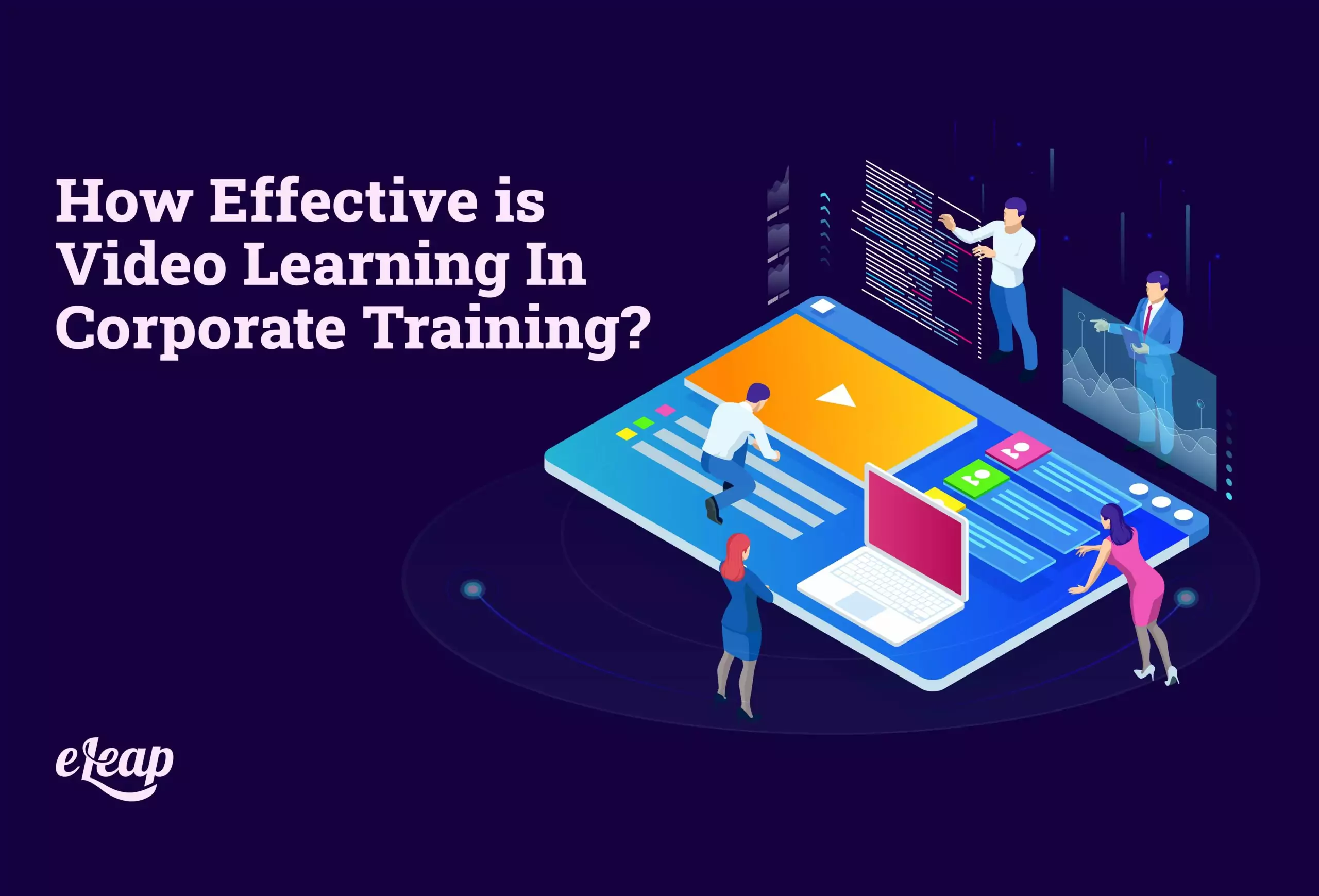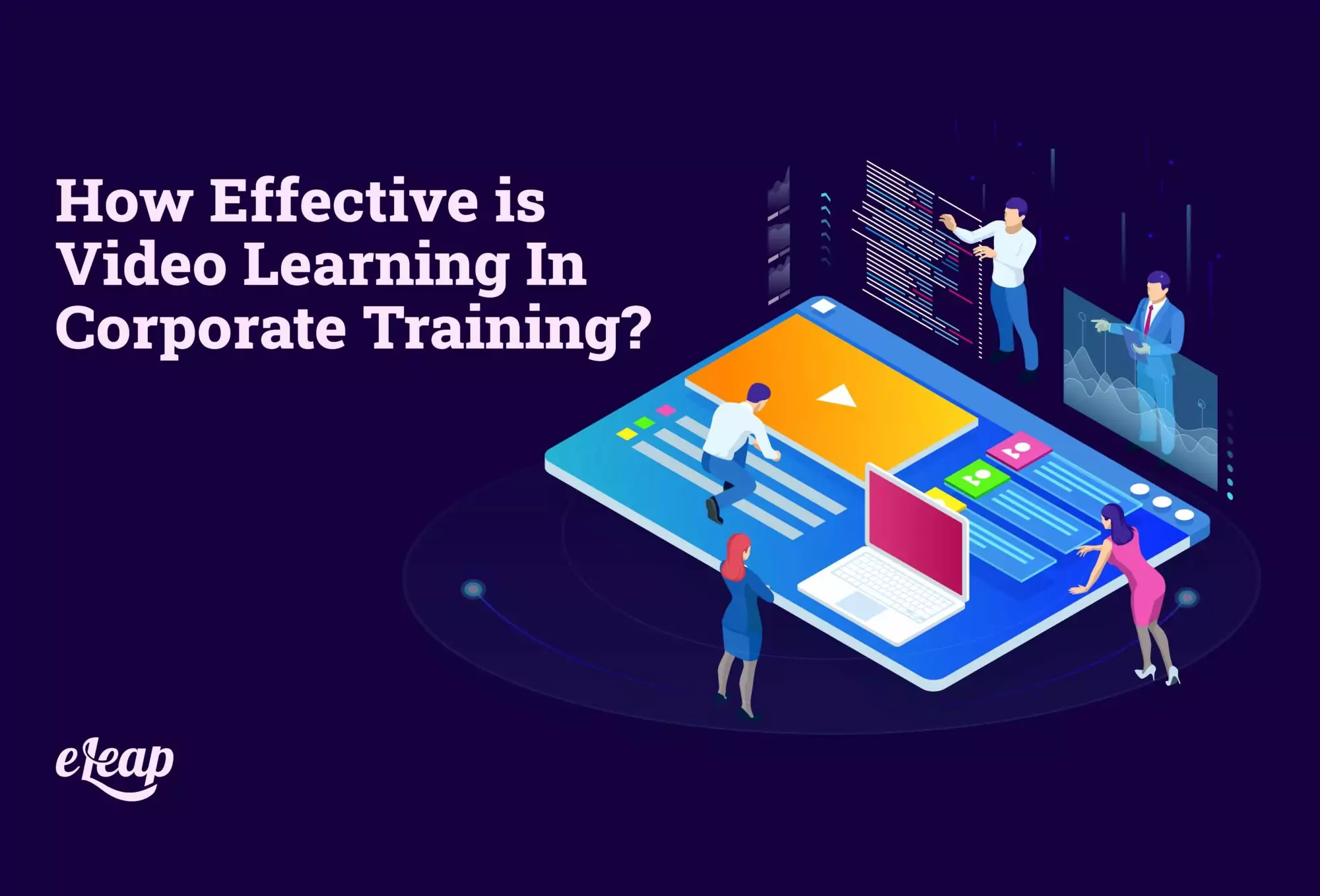How Effective is Video Learning In Corporate Training?

Corporate training is vital for the success of any large organization. Corporate training can advance employee skills, expose gaps in your learning, and improve overall employee performance. In fact eLeaP has many tools to help organizations use video learning in their corporate training.
In recent years, many organizations have spent upwards of 11% of their budget on corporate training alone. Before the pandemic, training was mainly delivered in person. However in the aftermath of Covid we all see the explosion of web-based corporate training leveraging video as an important medium. So why has eLearning and video training become so vital in the corporate onboarding process?

Because of the pandemic, many corporate leaders and employees have switched to working on a remote basis until further notice. During the time in which offices were closed, there was actually a significant increase in production, which countered predictions of a decrease in production. This has led to many organizations continuing to keep many employees on a remote basis, at least partially, if not full time.
The best learning management systems have allowed this training to become more efficient as time progresses. However, just because an LMS platform is available to an organization, this doesn’t mean that the type of platform they choose to deploy is always effective. It’s important to implement the proper strategies that work best with your daily life and corporate culture.
As of 2020, 74% of companies have chosen to use video platforms as a part of their training routines. According to studies, almost 90% of employees will forget what they learn in training if some type of visual aid isn’t provided with said training programs.
Because video is so effective at helping employees remember what they learn, it’s become crucial that this type of learning is available for an LMS platform. Otherwise, companies may run the risk of wasting precious funds on platforms that don’t deliver.
Effective Ways of Learning
Studies have shown that various types of video training can be provided to improve the learning process. There are multiple ways to implement video as part of your LMS, and the following list provides some of the best examples.
- Make modules and videos short to retain knowledge.
- Add quizzes at the end of videos to increase retention as well.
- Add whiteboard sketches to video learning.
- Implement gamification by adding video games to video learning.
Not all companies include gamification in their training, as it’s a fairly new trend that’s becoming more effective as time goes on. Additionally, many companies don’t even include video at all in their LMS.
By understanding how effective video learning can be, you can start to adopt a strategy to alter your content to include video modules. The following section outlines how adopting video on your LMS can improve your employee’s learning and retention.
Why Does Video Work So Well?
Pay attention to the following sections, as they will give you valuable insight into how video can help your organization increase the productivity of your employees and enhance learning.
Video Learning is Convenient and Self-Paced
The current corporate employee is showing more steadily that they prefer to learn and work in a self-paced environment. In the past, the option for convenience often worked against organizations, as employees had an issue with utilizing their time in an efficient manner. However, things have changed drastically.
When learners can watch videos online through your LMS platform, they can learn at their own pace. This allows them to digest the course material in a manner that works best for them. There are several reasons why the flexibility of video and remote learning is more effective now more than ever.
Many new employees seem to be more structured than employees of the past. This could have something to do with the structuring of their college course material and the way they learned before entering the workforce.
Additionally, everyday life is so fast-paced that it requires a fair amount of juggling. When team members can digest video courses at their own pace, they’re also able to juggle their commitments in their daily routine, giving them more time to dedicate to other dynamics. This leaves them with a greater appreciation for having this learning option.
The Human Brain Prefers Video Learning
It’s been proven in multiple studies that video learning is much more effective than all other types of learning. The brain has been shown to process video learning 60,000 times faster than text learning. This is an incredible difference that lends credibility to the theory of how effective video learning can be.
When people watch a video, they become immersed in it, and their full attention is normally on the material at hand. It’s much easier for a user to become emotionally attached to video than it is via text. There’s a much higher level of connection through using videos than simple reading material.
There’s no reason this theory doesn’t apply to corporate training as well. If employees can emotionally connect to course material through video learning, their chances of retention and better digestion increase drastically. They will engage much better with the course material, in turn leading to higher pass levels and a better understanding of the course.
In the end, this leads to a more efficient and productive onboarded employee. This will pay huge dividends for an organization in the long run.
Is Video Learning Worth the Money?
It’s true that adding certain video material to an LMS platform can be quite a bit higher in cost. However, with the proof that data provides, it can certainly be considered money well spent.
In studies, it’s been shown that team members digest 10% of text content, 65% of visual content, and a whopping 95% of audio and visual content together.
However, if you decide to use video content as part of your LMS, it’s important to remember to keep video segments brief and to the point. Attention and focus can still be lost if video content is made too long-winded, and material should still be easily digestible and in small doses. By breaking up all of your visual content into smaller bits, employees will have a much easier time retaining each course, leading to more effective learning in the process. Contact us today for a free consultation.